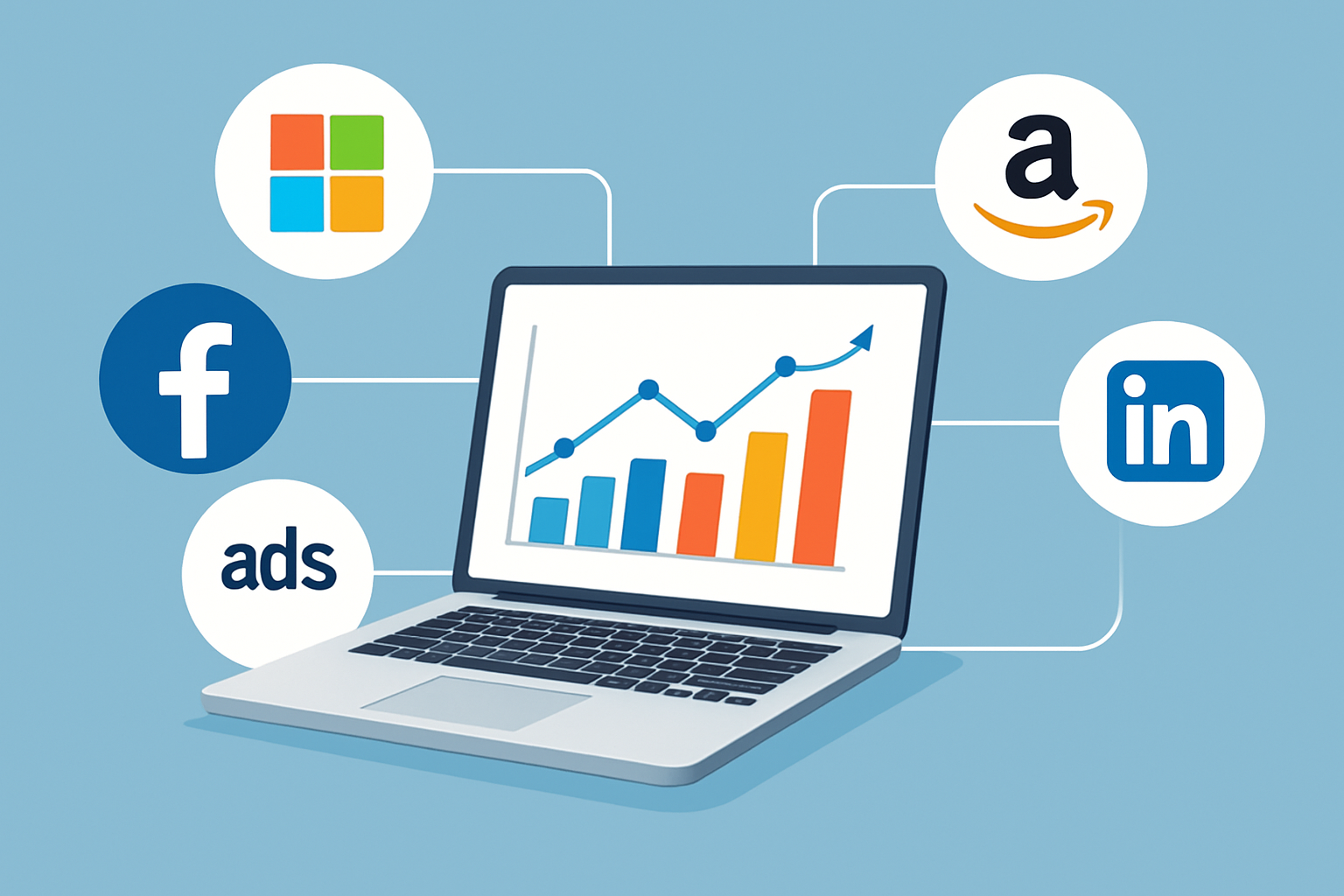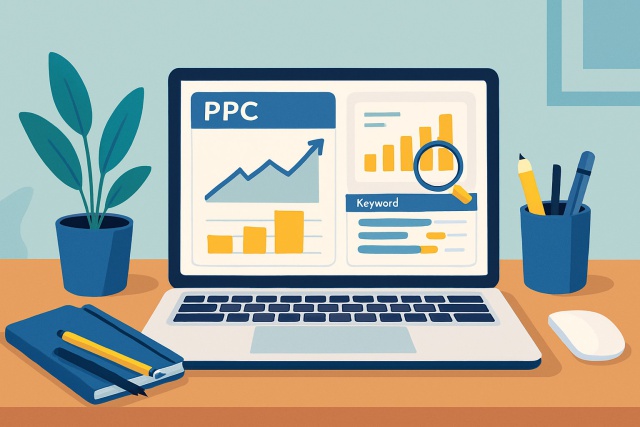
Choosing Between Semrush vs Ahrefs for Link Building
Discover which backlink tool reigns supreme in link building — Semrush or Ahrefs. This detailed comp...

Google Ads has been the go-to player in digital advertising for quite a while thanks to its vast reach and robust tools. Yet plenty of sharp advertisers explore google ads alternatives to keep their options open and hunt for platforms that might fit their budgets, target audiences or campaign ambitions better.
Google Ads boasts impressive reach and finely tuned targeting options yet advertisers often find themselves casting a wider net for several reasons. High costs and fierce bidding wars or the platform's complexity can sometimes throw a wrench in the works. Plus, certain niche audiences or unique ad formats might flourish better on platforms that feel tailor-made for specific business needs or privacy concerns.
Picking the right Google Ads alternative comes down to a few key factors that deserve careful thought. Your budget and the ROI you hope to see usually play a big role in deciding which platform fits the bill. Equally important is how user-friendly the platform is—nobody wants to wrestle with a clunky interface—and whether its targeting options line up with your campaign goals.
Kick things off by taking a good, hard look at your advertising budget and setting some realistic expectations for ROI—it’s the best way to keep those pesky overspending habits in check.
Get crystal clear on your main target audience: figure out where they hang out online and what habits they tend to have. Knowing this stuff makes all the difference.
Consider how user-friendly each platform actually is and what kind of support you can count on. Managing campaigns gets a lot less painful with the right backup.
Dive deep into the targeting and customization options to make sure your message really lands where it should—because a generic shout into the void won’t cut it.
Don’t forget to check out the analytics and reporting tools so you can keep an eye on how things are going and tweak your campaigns on the fly.
Lastly, think about how well the ad platform jives with your existing marketing tools. Keeping your workflow smooth is a lifesaver, and your future self will thank you.
We take a closer look at several solid alternatives to Google Ads, highlighting what sets each one apart and the best times to try them. Each platform has unique strengths that help advertisers connect with different audiences, explore specific features or keep ad costs more efficient.
Microsoft Advertising is a solid alternative that runs on a pay-per-click model similar to Google Ads. It opens the door to Bing and Yahoo search engines where costs per click are friendlier on the wallet because of less competition. One of its standout perks is the tight integration with LinkedIn's professional audience data. This lets you zero in on ad targeting by job title, industry and company size with impressive accuracy.
Diving into Facebook advertising is like stepping onto a bustling marketplace that never sleeps. It’s a playground where creativity meets strategy, and yes, sometimes a pinch of patience too. Whether you are a seasoned marketer or just getting your feet wet, crafting your message to stand out in the feed is part art, part science, with a dash of intuition thrown in for good measure.
Facebook Ads tend to hit the mark by zeroing in on audiences through their interests, demographics and behaviors. Unlike your typical search ads these crave visual storytelling—think photos, videos and carousel formats—that really catch the eye and ramp up engagement in users' social feeds. This approach is often a wallet-friendly way to build brand awareness, drum up leads and power retargeting campaigns, especially when search intent isn’t in the picture.
Amazon Advertising is tailored for ecommerce sellers and consumer brands looking to connect with shoppers ready to click that buy button. By tapping into Amazon’s enormous marketplace and the unmistakable buyer intent there advertisers showcase their products through Sponsored Products, Sponsored Brands and display ads that crank up visibility and sales.
When it comes to getting your brand in front of the right crowd, LinkedIn really stands out. It is not just another social network—it's the go-to spot for professionals actively looking to connect and engage. Whether you’re aiming to boost your company’s visibility or generate quality leads, advertising on LinkedIn offers a treasure trove of targeting options tailored to a savvy audience. Plus, with its blend of business-focused content and networking opportunities, your ads have a better chance of making a meaningful impact rather than just blending into the noise. So, if you are serious about reaching decision-makers and industry insiders, LinkedIn might just be your best bet.
LinkedIn Ads has earned its reputation as the go-to platform for B2B marketers who want to target professionals using detailed filters like job title, company size, industry or seniority level. It offers options such as sponsored content, InMail campaigns and text ads. All are crafted to ramp up lead generation and give brands a stronger foothold in their chosen business circles.
Stepping into the world of fresh platforms reveals a playground brimming with untapped potential and clever ways to connect. It’s like discovering a whole new neighborhood where every corner holds a chance to engage your audience in just the right moment. Navigating this space means being nimble, creative, and always on the lookout for the next big wave in how people consume content. The possibilities are vast, and with a bit of knack, these opportunities can turn into genuine breakthroughs.
Beyond the usual channels, programmatic advertising platforms and contextual ad networks step in to smartly allocate budgets by automating bidding across a wide range of publisher sites. These platforms usually zero in on contextually relevant placements instead of digging into personal user data, which often means better privacy compliance and a bit less of the cutthroat competition.

Visual representation of diverse advertising platforms available as alternatives to Google Ads.
For advertisers looking to ease up on paid ads while still building a lasting online footprint, investing in SEO tools and organic search strategies often turns out to be a smart bet in the long run. Organic SEO can nicely complement—or in some cases even replace—a chunk of paid campaigns by steadily boosting rankings and attracting quality traffic over time. Tools like Moz and Mangools provide digital marketers with a handy toolbox for everything from keyword research to site audits and backlink analysis.
Moz and Mangools bring solid toolkits to boost organic visibility through hands-on keyword research and thorough backlink audits. They also offer savvy competitive analysis and reliable rank tracking. These platforms do more than provide data. They give advertisers clear insights into SEO opportunities and the competitive landscape to help make smarter marketing decisions.
Moz and Mangools cater to different kinds of users but share the same goal: helping marketers boost organic traffic and climb search rankings. Moz offers a rich set of features and a solid reputation in the industry. It is a great fit for marketers who want deep-dive analytics and scalable solutions that grow with their needs. Mangools provides a no-nonsense budget-friendly toolkit that is often popular with small businesses and newcomers focused on keyword research and backlink analysis.
Choosing the right alternative to Google Ads involves keeping a close eye on your industry’s unique quirks, your specific advertising goals and the budget you’ve carved out. Of course, you also need to consider where your target audience actually hangs out online. Running small controlled tests across various platforms can really pay off. These tests offer nuggets of insight that help you fine-tune your strategy.
Start setting clear and measurable goals to keep your advertising efforts on track—think of them as your trusty roadmap.
Figure out where your target audience hangs out online and what kind of content really grabs their attention.
Set a realistic test budget that gives you enough wiggle room to experiment across different platforms without breaking the bank.
Take a good, hard look at each platform's performance metrics and ROI during your testing phase—you’ll want to spot what’s working and what’s just noise.
Decide whether to blend platforms for a wider reach or fully commit to the one that’s pulling its weight, based on your findings and overall game plan.
In the grand scheme of things, mixing up your advertising strategy isn’t just a nice-to-have—it’s more like your secret sauce for standing out. Over time, I have noticed that leaning too heavily on one channel tends to backfire; variety really is the spice of success here. Sure, it might feel a bit daunting to juggle multiple platforms, but the payoff makes it worth the extra brainpower. Plus, who doesn’t like spreading a little risk around? So, if you take away just one thing from this, let it be this: keep your options open and your approach fresh. After all, in advertising, as in life, expecting the same old tricks to deliver new tricks rarely pans out.
While Google Ads still holds the crown in digital advertising, exploring google ads alternatives gives advertisers more control over their budgets and sharper targeting options. Using these paid alternatives with solid organic SEO efforts—using trusty tools like Moz and Mangools—sets you up with a well-rounded and flexible digital marketing plan.

Discover which backlink tool reigns supreme in link building — Semrush or Ahrefs. This detailed comp...

Master web development SEO with this practical guide using Semrush. Learn to audit, optimize, and tr...

Unlock powerful PPC optimization strategies that elevate your campaigns beyond basics. Learn expert...

Unlock the power of video content with top video search engines tailored for keyword research. Disco...